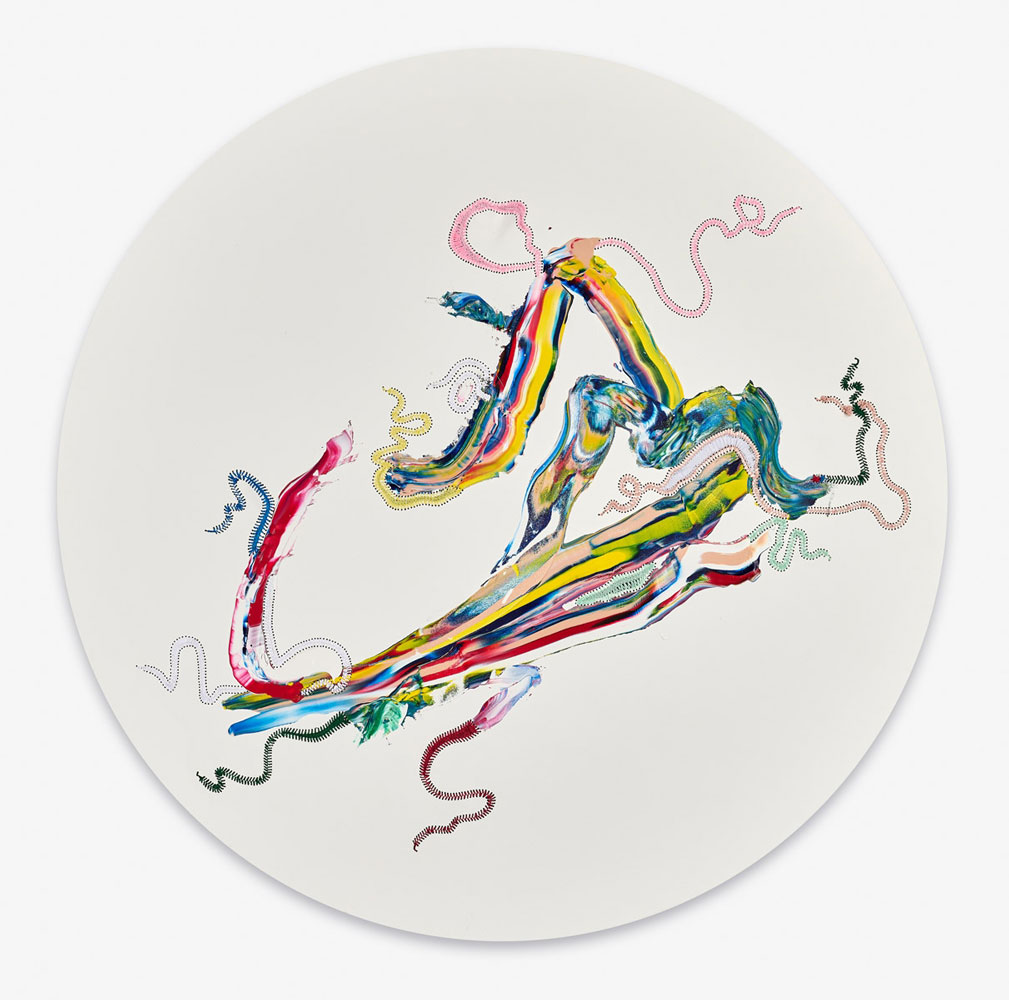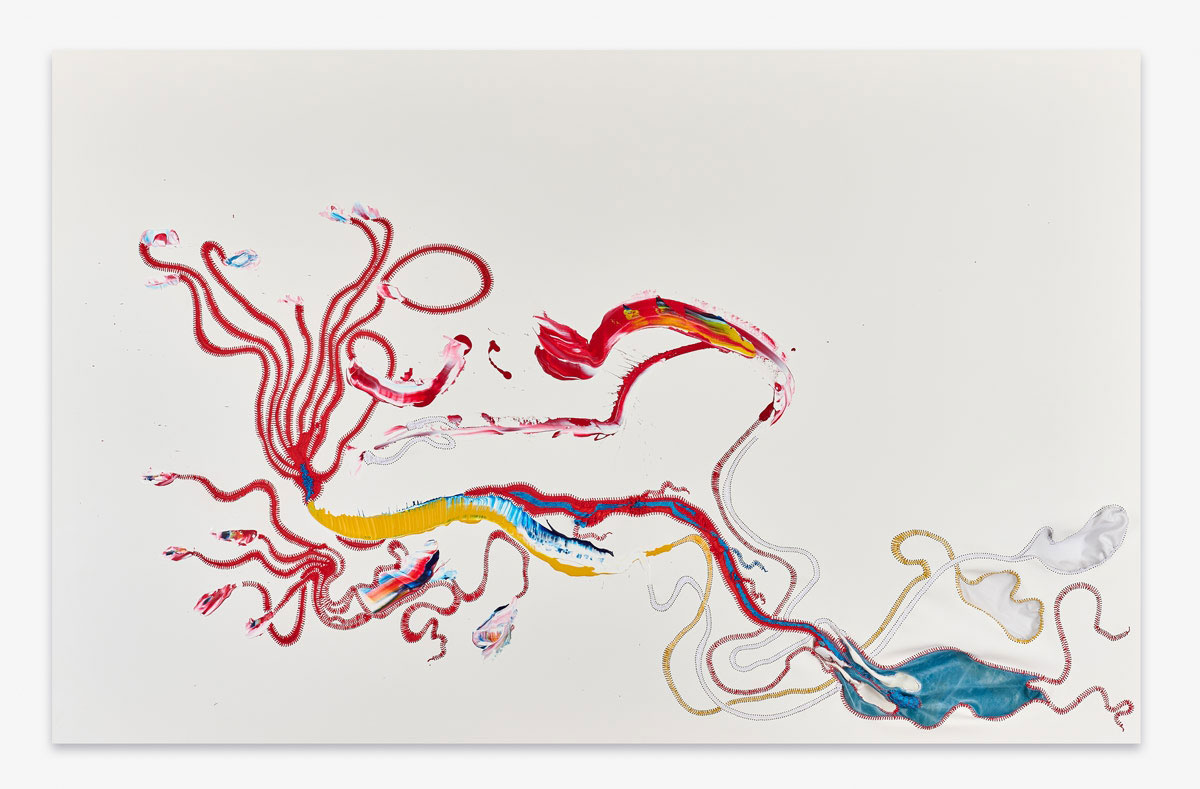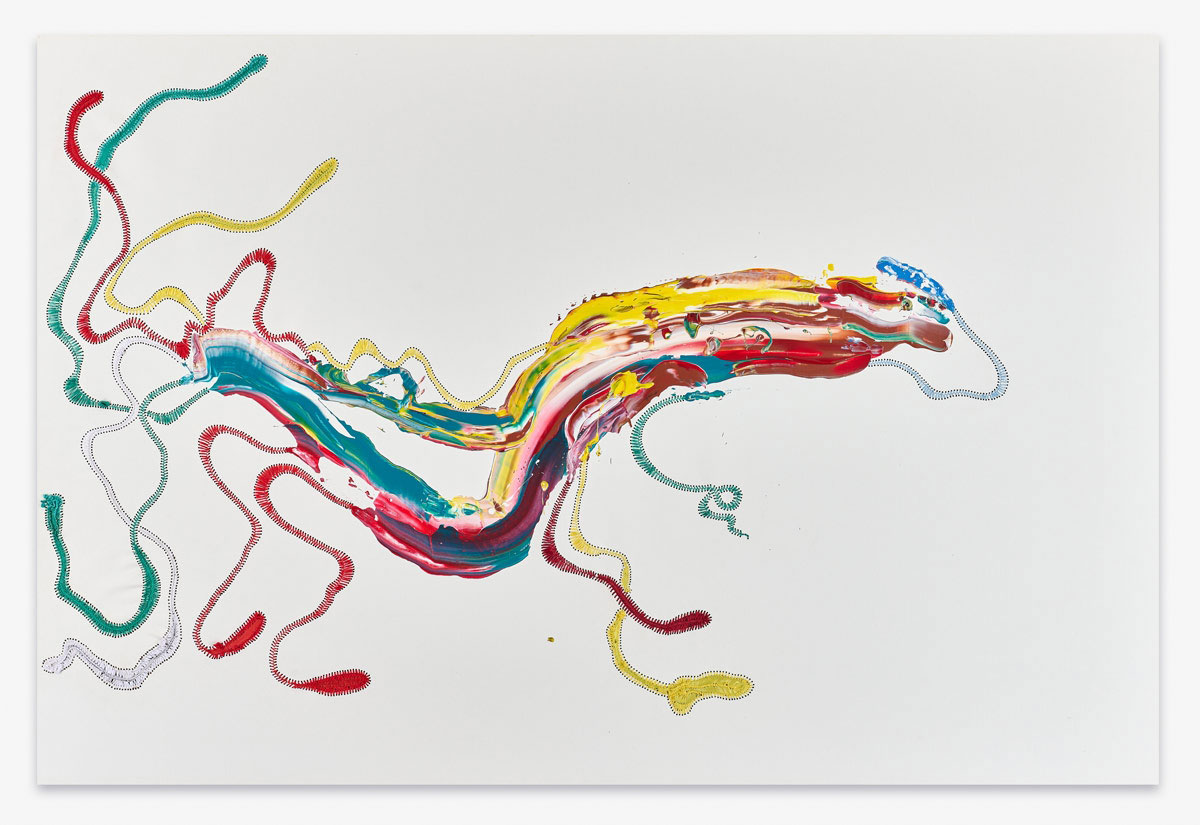ART CITIES: London-Nicholas Hlobo
 Nicholas Hlobo creates intricate two- and three-dimensional hybrid objects. Each material holds a particular association with cultural, gendered, sexual, or ethnic identity. Together, the works create a complex visual narrative that reflects the cultural dichotomies of Hlobo’s native South Africa, as well as those that exist around the world. His evocative, anthropomorphic imagery and metaphorically charged materials elucidate the artist’s own multifaceted identity within the context of his South African heritage.
Nicholas Hlobo creates intricate two- and three-dimensional hybrid objects. Each material holds a particular association with cultural, gendered, sexual, or ethnic identity. Together, the works create a complex visual narrative that reflects the cultural dichotomies of Hlobo’s native South Africa, as well as those that exist around the world. His evocative, anthropomorphic imagery and metaphorically charged materials elucidate the artist’s own multifaceted identity within the context of his South African heritage.
By Efi Michalarou
Photo: Lehmann Maupin Gallery Archive

Nicholas Hlobo presents new paintings in his solo exhibition “Elizeni Ienkanyiso”. Best known for his weaving and stitching of metaphorically charged materials, such as colorful ribbon, leather, wood, and copper, Hlobo creates composite objects that are intricate and seductively tactile. The results are highly evocative, and the artist combines anthropomorphic imagery and cultural symbols and traditions to create amalgamated forms that feel at once familiar, alien, and ancient. Hlobo’s practice engages themes of self-discovery and explores the intersections of his race, gender, and cultural and sexual identity within the context of his South African heritage. In his newest body of work, the artist introduces colorful acrylic paint for the first time, returning to a classic fine art medium that he has not employed since he was a student. Hlobo’s combination of acrylic with his signature leather and satin ribbon interventions unites craft and fine art materials within a single canvas, reflecting his enduring interest in resisting strict dichotomies and hierarchies in favor of fluid hybridity. The works in Elizeni Ienkanyiso comprise a menagerie of reptilian and aquatic animals, including turtles, lizards, snakes, and hatchlings. Hlobo described the experience of creating these pieces as a process of “finding joy or warmth” after the effects of the global pandemic, and this sentiment is echoed in these animal’s cold-blooded nature and their need to seek heat to survive and flourish. The show’s title, which translates from Xhosa to “on the wave of enlightenment” is taken from the only circular canvas in the exhibition. In this work, the artist interprets the abstract forms and swirls as resembling a human-like figure surfing a giant wave. Considering the many metaphorical “waves” of the COVID-19 pandemic, here Hlobo implies recent demands to navigate global uncertainty and hardship and suggests that through traversing these difficult waters we can come to a new, more profound understanding of self and society. Throughout the exhibition, Hlobo’s acrylic, ribbon, and leather abstractions move and shift, seeming to come alive and taking on animalistic qualities. The creatures in the artist’s canvases inhabit their own world, and Hlobo has woven myriad relationships between them. One work, “Sondela maCilikishe” (2021), depicts a male lizard calling to its mate for a passionate embrace, while its pair, “Ndange Cilikishe” (2021) looks out of the frame towards her partner, the numerous spirals and ribbon stitching flowing behind her resembling a dress or skirt. Hlobo genders his lizards with an eye towards the animal kingdom, particularly birds, where the most elaborate plumage is reserved for the male of the species. The two paintings form a type of reptilian family, and the smallest works in the exhibition, “Iyuk’welincinci” (2021) and “Iyuk’welidala” (2021) represent the children born to the lizard parents. Rendered in a kaleidoscope of acrylic paint with swirls and loops of ribbon that suggest legs or tentacles, these hatchlings are new to the world, naive to its workings and vulnerable to predators—particularly the pair of imagined, meddlesome serpents in “Mpumlwana” (2021). One of the largest paintings in the exhibition, “Iqokobhe” (2021), depicts a multi-colored turtle swimming in the deep, content in its natural habitat as it soars towards the water’s surface with bright blue bubbles of leather flying off its quick fins. Iqokobhe, which translates to “the shell,” references the protective shell of the turtle, but also evokes the shell of incubation, which must be broken and discarded in the process of growth. Where the turtle’s shell offers protection and security, Hlobo’s reptilian hatchlings have escaped theirs, reflecting the delicate balance between safety in the familiar and expansion through exploration of the unknown. Taken together, “Elizeni Ienkanyiso” comprises its own allegorical animal kingdom, in which human spiritual and psychological experiences are reflected, questioned, and interpreted. After a period in which many felt the sense of losing their bearings, the exhibition offers a place of solace and room for joy. Hlobo’s use of rich, jubilant colors throughout creates a positive tone, inspiring visions of a brighter, more enlightened future ahead.
Photo: Nicholas Hlobo, Elizeni Ienkanyiso, 2021, Acrylic, and ribbons on linen and cotton canvas, 51.18 x 51.18 x 1.97 inches, 130 x 130 x 5 cm, © Nicholas Hlobo, Courtesy the artist and Lehmann Maupin Gallery
Info: Lehmann Maupin Gallery, 1 Cromwell Place, South Kensington, London, United Kingdom, Duration: 11/3-23/4/2022, Days & Hours: Wed-Sat 10:00-18:00, www.lehmannmaupin.com


